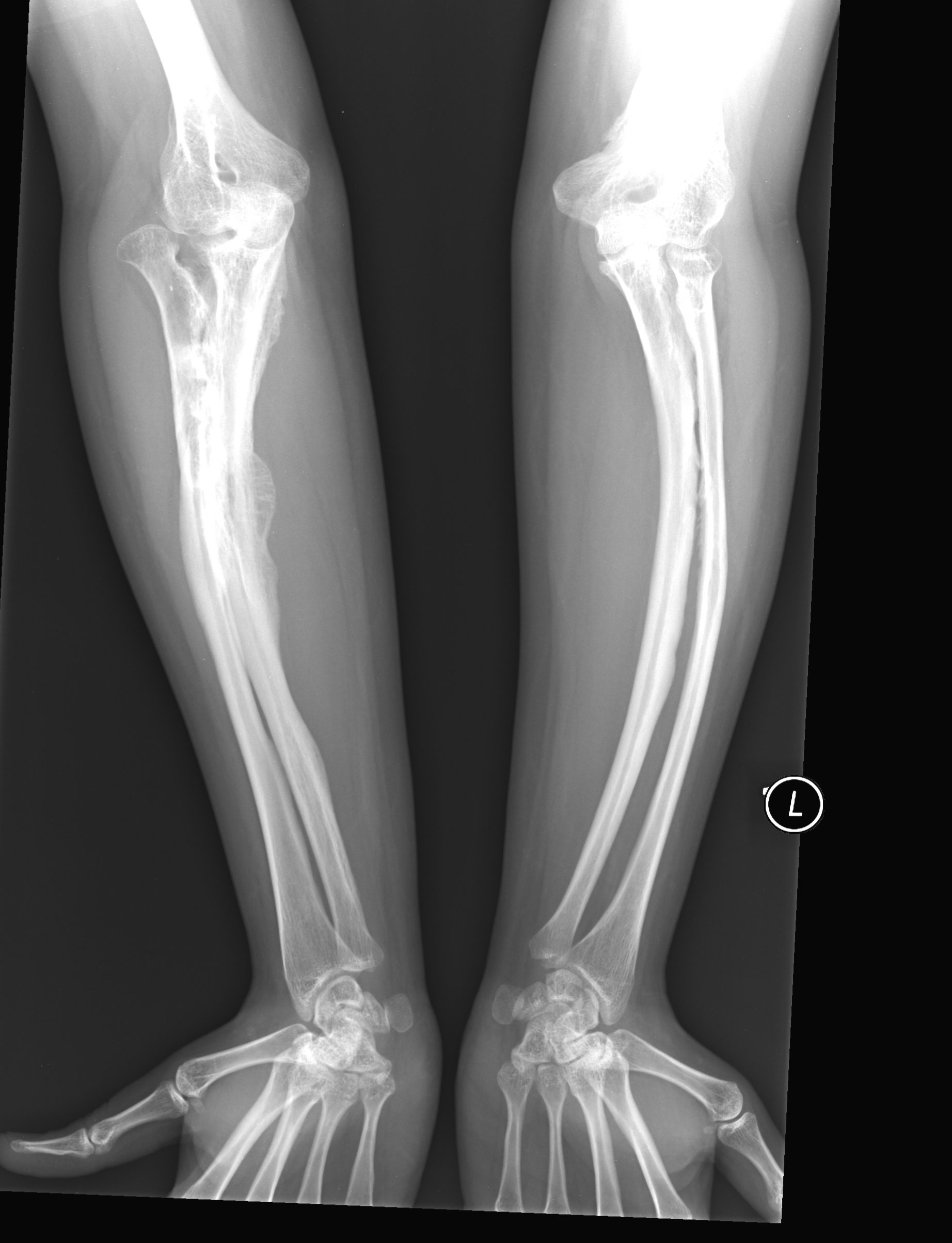Osteogenesis imperfecta - types and treatment

Osteogenesis imperfecta is a genetic disorder, commonly called brittle BONE disease, in which there are defects in the ways the body produces type 1 collagen, a fibrous protein that is the foundation of bone formation. As a result the bones lack proper structure and density and are highly susceptible to FRACTURE. The defective collagen may affect other structures in the body as well, notably the LUNGS. HEARING LOSS is also common. Most osteogenesis imperfecta is inherited though may occur as the result of spontaneous MUTATION.
There are four types of osteogenesis imperfecta:
- Type 1 osteogenesis is the most common. People who have type 1 disease generally reach normal height and have few obvious skeletal deformities. Type 1 osteogenesis imperfecta typically causes more fractures during childhood than in adulthood. Hearing loss is pronounced and begins early in childhood.
- Type 2 osteogenesis imperfecta is the most rare and the most severe. It produces numerous deformities of the SKELETON and often is fatal in infancy. The abnormal collagen formation also profoundly affects the lungs, causing significant BREATHING problems.
- Type 3 osteogenesis imperfecta produces obvious skeletal deformities. Fractures before birth are common; ULTRASOUND can detect them in the FETUS. Type 3 disease also affects the lungs and muscles. Hearing loss begins in early childhood and often becomes complete by ADOLESCENCE.
- Type 4 osteogenesis imperfecta is more severe than type 1 but less severe than type 3. Fractures are most common before PUBERTY. Hearing loss begins in early childhood and is often profound.
Osteogenesis Imperfecta Treatment
The bones of infants who have osteogenesis imperfecta are very fragile and may fracture with the slightest contact, even that of picking up or holding the infant. Nonetheless, touch and holding are very important for proper development. The health-care team can provide suggestions to minimize the risk for fracture. Treatment for fracture is generally conservative, targeting a balance between immobilizing the fracture long enough for it to heal and allowing normal MUSCLE function as quickly as possible. Physical activity helps strengthen muscles and bone, which in turn minimizes fractures. The most numerous fractures occur during childhood when the bones are growing and thus have lower mineral content. The risk for fracture is lifelong, however, and may increase in women after MENOPAUSE when BONE DENSITY naturally declines. There are as yet no treatments to overcome the collagen deficiencies of osteogenesis imperfecta.
See also GENETIC DISORDERS; INHERITANCE PATTERN.
Open discussion on the topic Osteogenesis imperfecta - types and treatment
Similar interests
- Nuovi Casino
- Casinos Not On Gamstop
- UK Casinos Not On Gamstop
- Casinos Not On Gamstop
- UK Casinos Not On Gamstop
- Casino Non Aams Italia
- Slot Sites Not On Gamstop
- Meilleur Casino En Ligne
- Non Gamstop Casino Sites UK
- Meilleur Casino En Ligne
- Casino En Ligne France
- Best Non Gamstop Casinos
- Casinos Not On Gamstop
- UK Casino Not On Gamstop
- Casinos Not Signed Up To Gamstop
- Best Slot Sites UK
- Non Gamstop Casino Sites UK
- Online Casinos Nederland
- Online Casinos Nederland
- Casinos Not On Gamstop
- Best New Uk Casinos Not On Gamstop
- Casino Non Aams
- Non Gamstop Casinos UK
- Migliori Siti Casino Non Aams
- Bitcoin Casinos